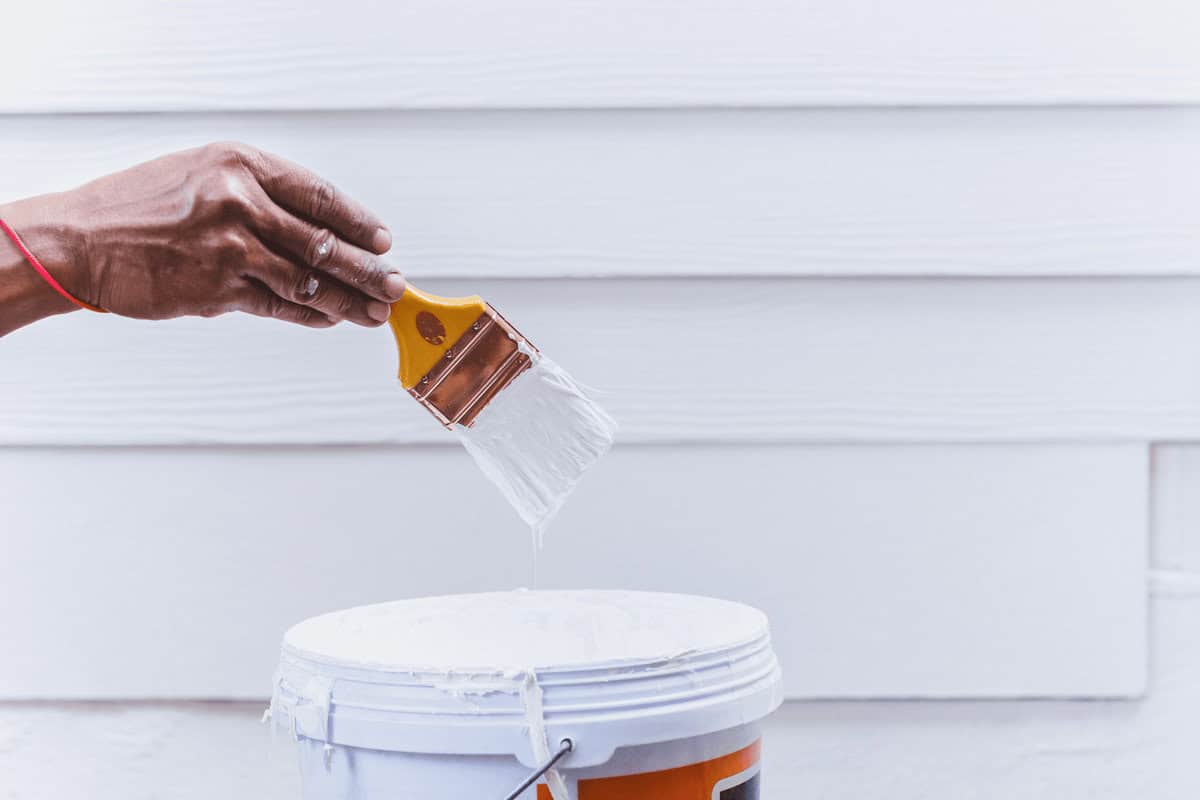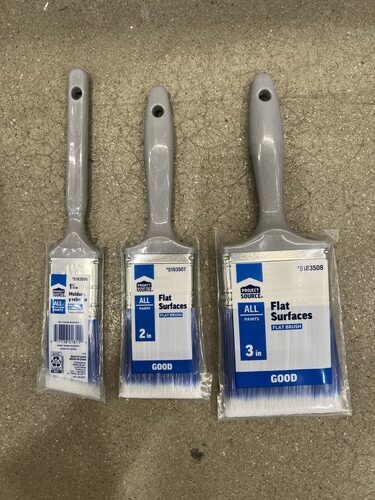
Painting baseboards might seem like a small detail in home improvement, but it can make a big difference in the overall appearance of a room. Whether you’re freshening up a space or completing a DIY renovation. Choosing the best paint brush for painting baseboards is key to achieving professional-looking results.
In this guide, we’ll explore the best paint brushes for baseboards, helping you select the perfect tool for the job. No matter the size or style of your baseboard we will make sure you have all the information you need to make the right choice.
The best part about what’s in this guide is…
You get a double whammy for it basically. This information will also help you choose the right trim brushes for painting your crown molding too. If that is on the list of things for you to paint also, then you will have all the bases covered when it comes to detailed painting in your home.
They say the devil is in the details and I am a firm believer in this. It is the quality in the detail work that makes all the difference in getting that professionally done look. Let’s get into how you can achieve that same look professional painters get with a good paint brush.
Why the Right Brush Matters

When it comes to painting baseboards, using the right brush is crucial to achieving a smooth, professional-looking finish. Baseboards are typically located in high-traffic areas, where they’re subject to scuffs, bumps, and general wear and tear. Because of this, the paint on baseboards needs to be durable and evenly applied to withstand daily use.
Choosing the best paint brush for baseboards not only ensures even coverage but also minimizes the chances of unsightly brush marks and streaks. A good brush will allow you to reach into tight corners and spaces without leaving a mess, helping you to maintain clean lines where the baseboards meet the walls and floors.
Additionally, the right brush can speed up your paint project, making the painting process more efficient and enjoyable.
Factors to Consider When Choosing a Brush
Here are the factors to consider when choosing a brush:
Bristle Types
- Synthetic Bristles: If you’re using latex paint, synthetic brushes are your go-to option. Typically made from nylon, polyester, or a blend of both, synthetic bristles are designed to maintain their shape and resist water absorption. This makes them durable, easy to clean, and ideal for water-based paints. They’re less likely to swell or soften during use, which means you can achieve a smooth, consistent finish with minimal effort.
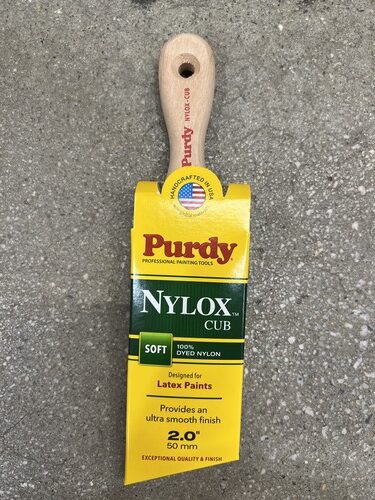

- Natural Bristles: For oil-based paints, natural bristle brushes are the preferred choice. Made from animal hair, these bristles offer a softer, more flexible application, which is perfect for achieving a smooth, glossy finish. However, natural bristles can be more challenging to clean and maintain, as they’re prone to absorbing oils and solvents. Despite the extra care required, the results can be well worth it for certain projects.
- Blended Bristles: Some brushes feature a blend of synthetic and natural bristles, combining the strengths of both. These versatile brushes offer the durability and easy maintenance of synthetic bristles with the smooth finish provided by natural bristles. They can be a great choice if you’re working with a variety of paint types or want a brush that offers a balance of benefits.


Brush Size
The size of your brush plays a significant role in how efficiently you can paint your baseboards:
- 2-Inch Angled Brush: This size is often considered the sweet spot for baseboard painting. It’s small enough to maneuver around corners, edges, and tight spots with precision, yet large enough to cover the surface area of baseboards efficiently. The angled tip also helps you achieve clean lines along the edges.
- 2.5- to 3-Inch Brush: If you’re working with particularly wide baseboards, consider opting for a slightly larger brush. A 2.5- or 3-inch brush offers more coverage, allowing you to paint larger sections more quickly. However, keep in mind that the larger the brush, the harder it may be to control in tight spaces, so balance coverage with precision depending on your project needs.
Brush Shape
The shape of your brush can also impact the quality of your finish:
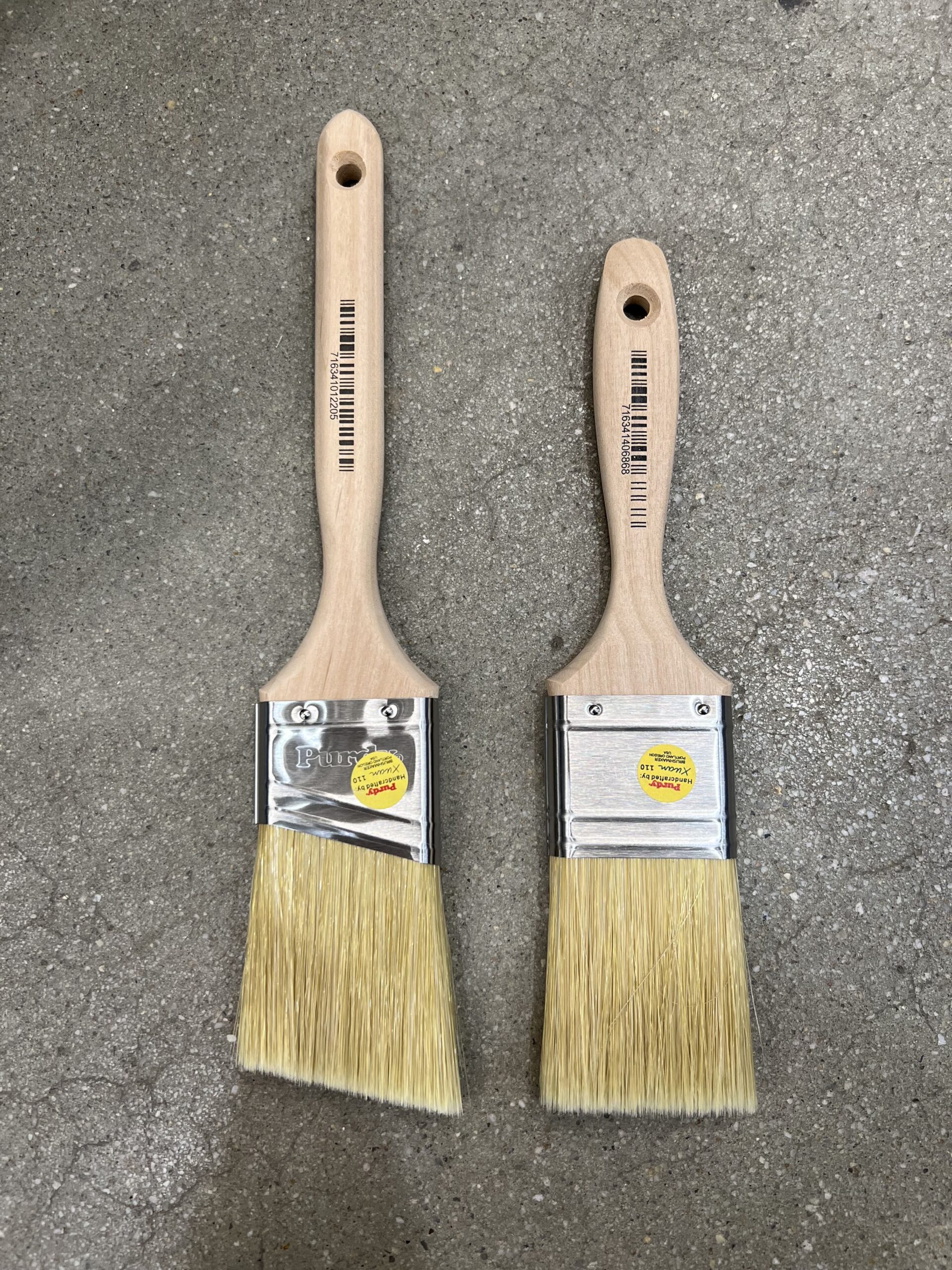
- Angled Brush (Sash Brush): An angled brush, also known as a sash brush, is ideal for painting baseboards. The slanted bristles allow for precise control, making it easier to cut in along the edges where the baseboard meets the wall or floor. This shape helps prevent paint from spreading onto adjacent surfaces, giving you clean, crisp lines with minimal touch-ups needed.
- Flat Brush: While less common for baseboards, a flat brush can be useful for painting wide, flat sections. It’s particularly handy for broader baseboards where you need to cover more surface area quickly. However, flat brushes don’t offer the same level of control as angled brushes, so they’re best reserved for areas where precision is less critical.
Choosing the Right Paint Brush for Your Paint Type
The type of paint you choose directly impacts the type of brush you will need to get the best results for your baseboards:
- Latex (Water-Based) Paint: For latex paint, which dries quickly and has low odor, a synthetic bristle brush is ideal. These brushes resist absorbing water, maintaining their shape for smooth, even coverage and easy cleanup with soap and water.
- Oil-Based Paint: Oil-based paints offer a durable, rich finish, perfect for high-traffic baseboards. Natural bristle brushes, made from animal hair, are best for these paints, providing a smooth application but requiring more effort to clean with mineral spirits.
- Enamel Paint: Enamel paints create a hard, durable finish. Use a synthetic bristle brush for water-based enamels and a natural bristle brush for oil-based varieties to achieve a smooth, resilient finish.
- Semi-Gloss and Gloss Finishes: These finishes are popular for baseboards due to their easy-to-clean, shiny appearance. A synthetic bristle brush works best for latex versions, while a natural bristle brush suits oil-based paints, both ensuring a sleek, professional look.

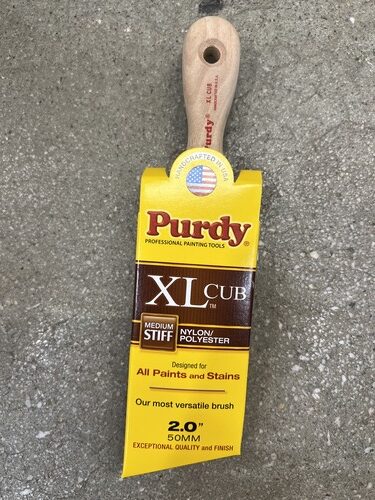
Top Paint Brushes for Baseboards
Here are some of the best brushes available on the market, known for their quality and performance:


- Purdy Brushes 2-Inch XL Glide
- Bristles: Nylon/polyester blend
- Best For: Latex paints
- Why It’s Great: The Purdy XL Glide is a favorite among professionals and DIYers alike. Its medium-stiff bristles provide excellent control, and the angled design makes it easy to cut in around baseboards. The brush is durable, holds paint well, and cleans up easily.
- Wooster Brush – Silver Tip Angle
- Bristles: Tipped polyester
- Best For: Smooth finishes with latex or oil-based paints
- Why It’s Great: The Silver Tip series is known for its ultra-smooth finish. The soft bristles help achieve a flawless look, making it a great choice for final coats on baseboards. Its precise edge allows for detailed work without leaving brush marks.
- Zibra Grip-n-Glide 2-Inch Detail
- Bristles: Synthetic
- Best For: Hard-to-reach areas and detailed work
- Why It’s Great: The Zibra Triangle Brush is a unique option with a triangular shape, making it ideal for painting along edges and in corners. It’s particularly useful for intricate baseboard designs or tight spots where a standard brush might struggle.
Tips for Painting Baseboards
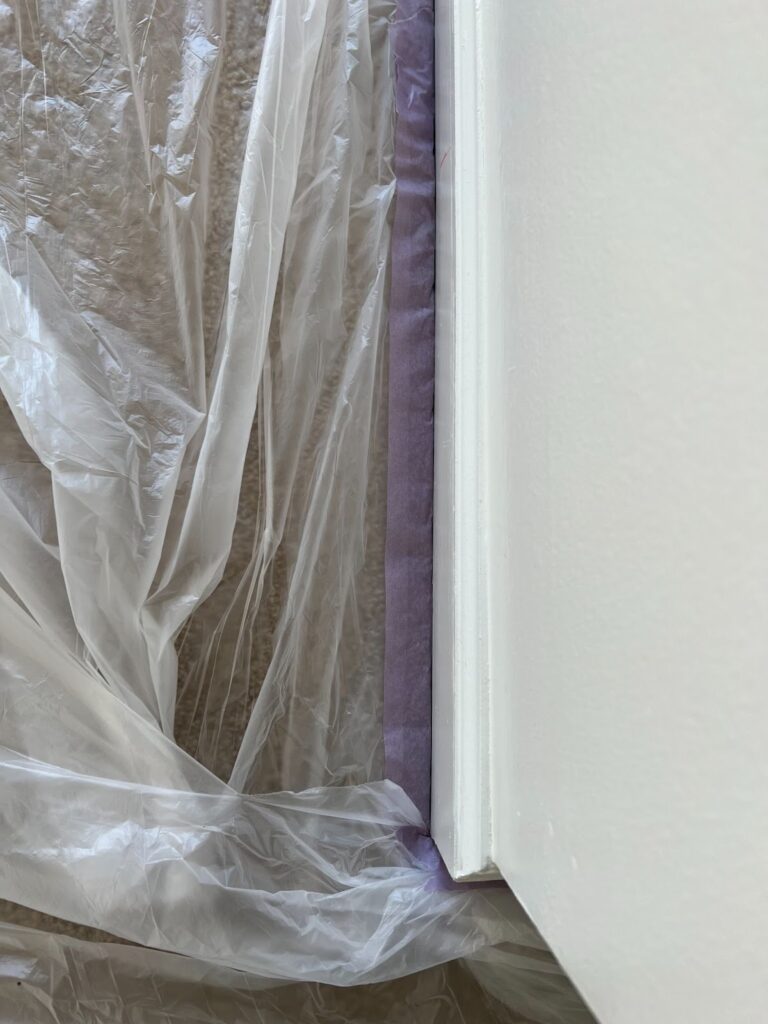
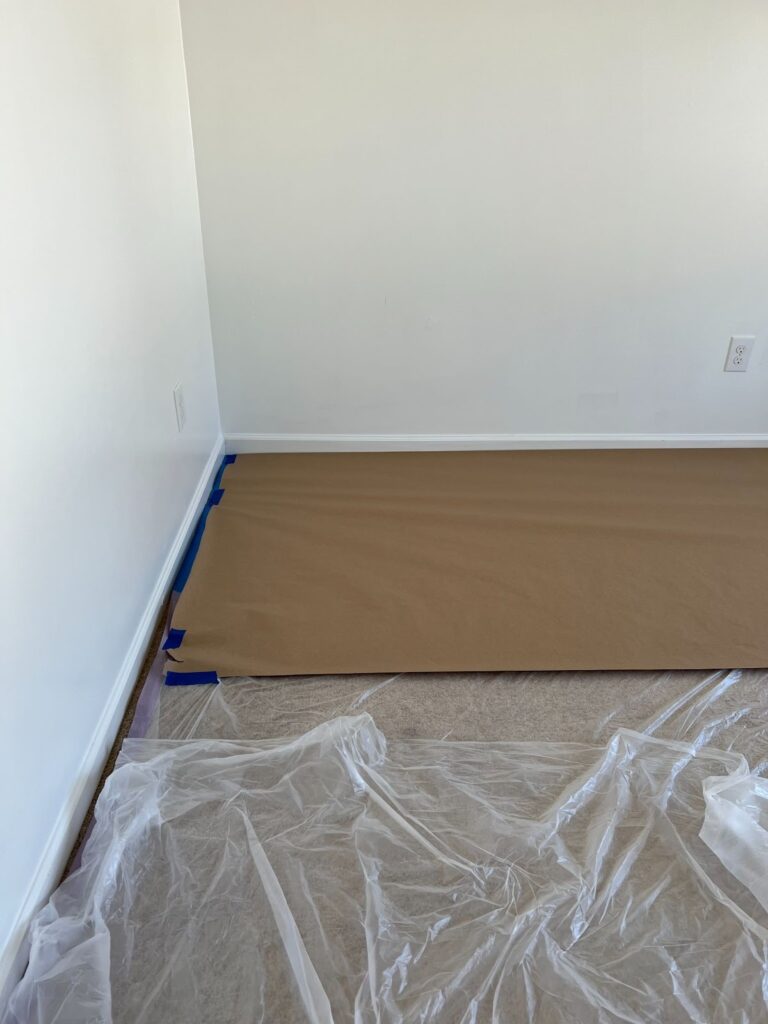

- Prep Work is Key: Clean the baseboards thoroughly before painting. Use painter’s tape to protect adjacent surfaces, and consider using a drop cloth to avoid spills on the floor.
- Use Light Coats: Apply paint in thin, even coats to avoid drips and ensure a smooth finish. It’s better to do multiple light coats than one heavy coat.
- Work in Sections: Paint in manageable sections, starting from one end and working your way to the other. This helps maintain a wet edge and prevents lap marks.
- Maintain Your Brushes: Clean your brushes immediately after use according to the paint type. Proper care will extend the life of your brushes and keep them in top condition for future projects.
- Use Paint Shields: they help protect your flooring whether it is carpet, wood or tile. Every few sections of using a paint shield wipe it clean to make sure extra paint isn’t building up and rubbing on your flooring.
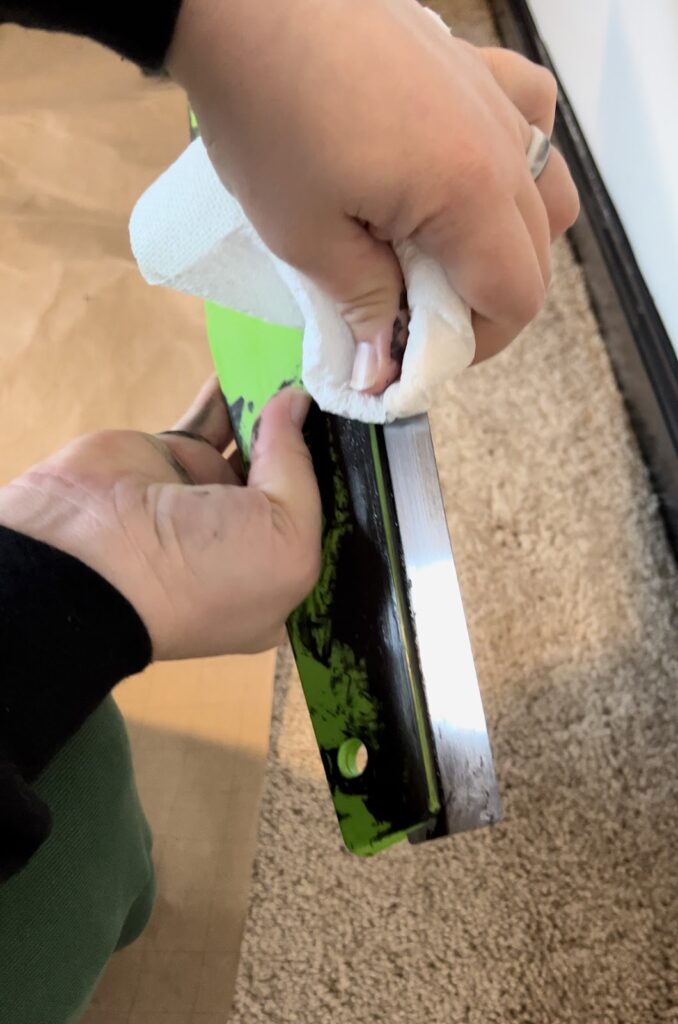
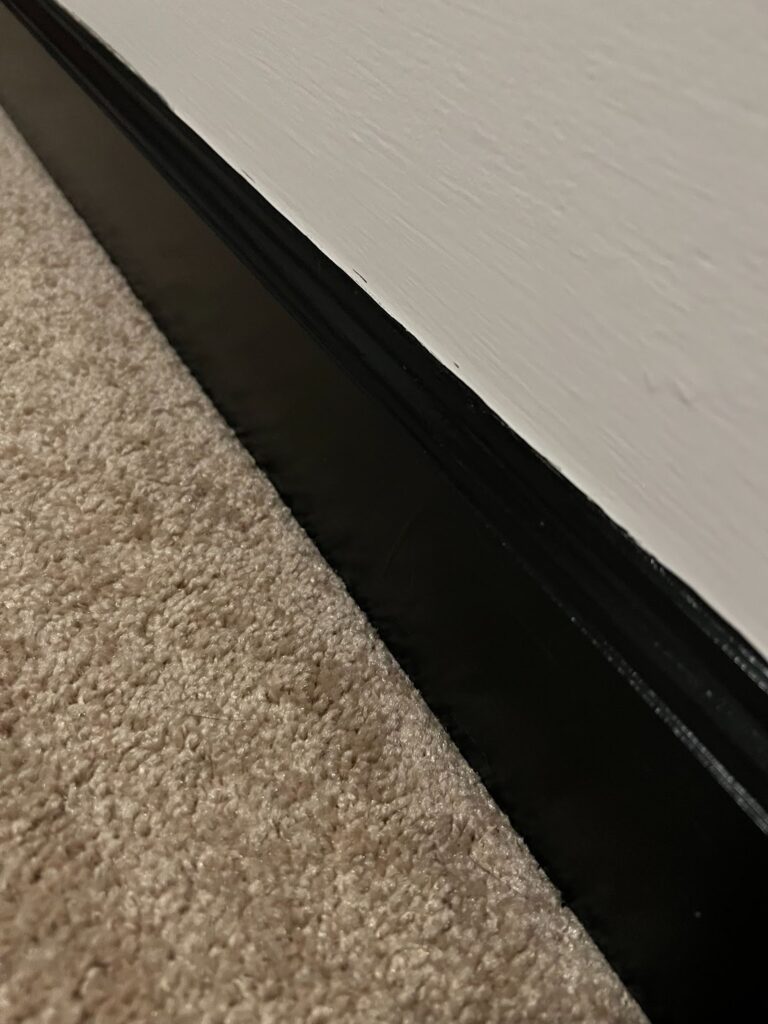
Investing in a high-quality brush for baseboards or any detailed work can make a significant difference in the final result of your project. Whether you’re touching up a single room or tackling an entire house, choosing a quality brush will ensure a smooth, professional finish that enhances the look of your space.
Consider the bristle type, size, and shape of the brush, and don’t forget to take care of your tools for the best results. Make sure it is the correct brush depending if you are using oil-based or latex paint.
Remember if you also need to paint some crown molding or window trim these brushes are perfect to use on those as well. The brushes you choose for your baseboards are made for detail work and they work for any trim detail in your home.
PRO TIP: Spend the money and just buy the better brushes the first time. Make sure to clean them thoroughly after each use and you will always have good brushes on hand when you are ready to paint something else. Eventually you’ll have built up the perfect variety of brushes stash for all of your future project needs.
Happy painting! We can’t wait to see what you paint next!!!
Selecting the right paint brushes makes painting baseboards easier and more precise. For more painting tips, check out our How to Cut Baseboard Corners Without a Miter Saw guide. You may also enjoy our Easy Low Budget DIY Garage Makeover Ideas for more home improvement projects.
If or when you choose The Best Paint Brush for Painting Baseboards. I’d love for you to tag us on Instagram so I can see your really DIY projects finished results!
COZY HOME, COZY RECIPES:
Every cozy home deserves amazing recipes, and it’s even better when those recipes are both delicious and healthy. Our goal is to provide tasty meals that are easy to make, regardless of your skill level.
Fast, easy meals leave more time for fun activities, making your home a hub of joy and good food.
CONNECT WITH US:
As always, we love hearing about your experiences with our “The Best Paint Brush for Painting Baseboards: A Complete Guide ”. Reach out to us through our social channels. Any questions you have, we’re here to answer.
Stay updated by joining our newsletter, offering a monthly dose of new recipes and a first look at upcoming projects.
MORE COZY KITCHEN RECIPES:
If you’re hungry for more, explore our collection of Cozy Kitchen Recipes. Another healthy favorite is the “Sausage Potato Veggie Bake.” Find these recipes and more here.
DIY RESOURCES:
For additional resources, check out our DIY Tutorials, offering a wealth of information to enhance your home improvement skills.

